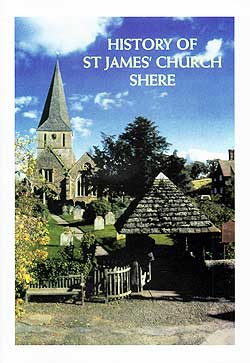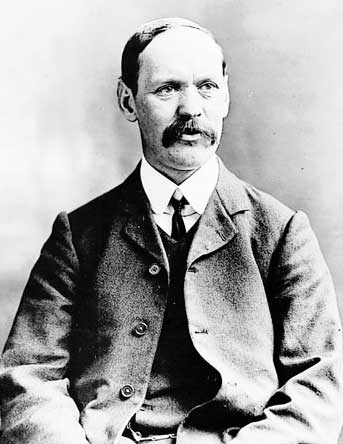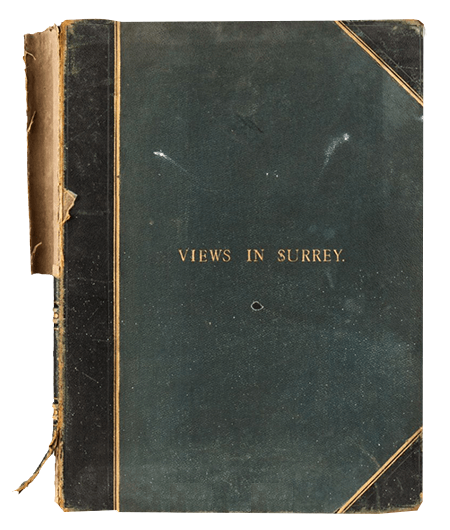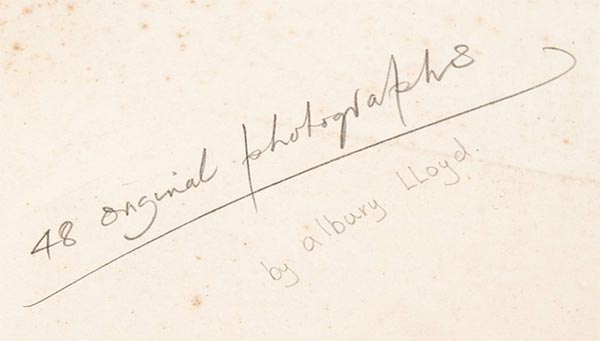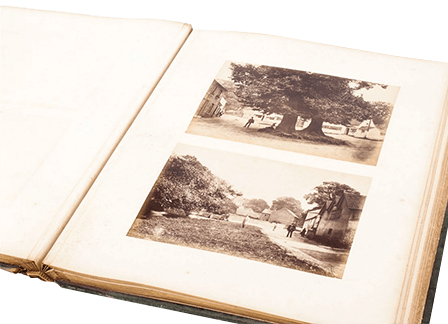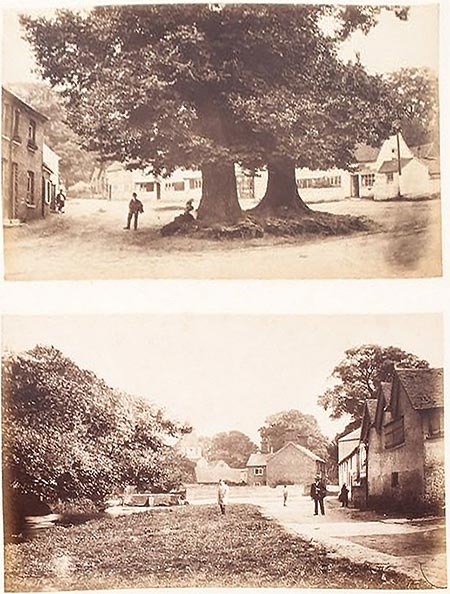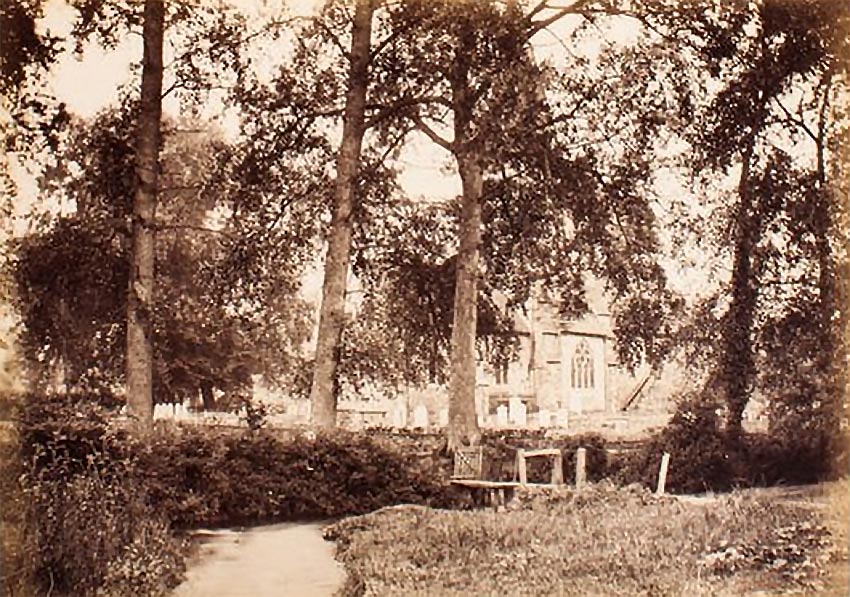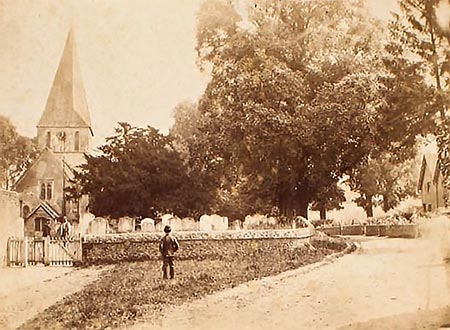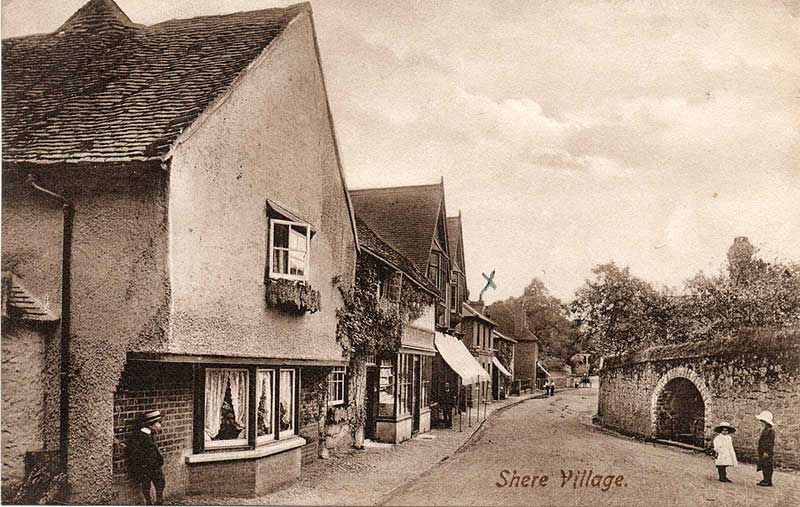 Above: front of the postcard titled 'Shere Village' with a view of Middle Street towards the 'Tillingbourne Stream' where Middle and Lower Street meet at 'The Square' and below...
Above: front of the postcard titled 'Shere Village' with a view of Middle Street towards the 'Tillingbourne Stream' where Middle and Lower Street meet at 'The Square' and below...
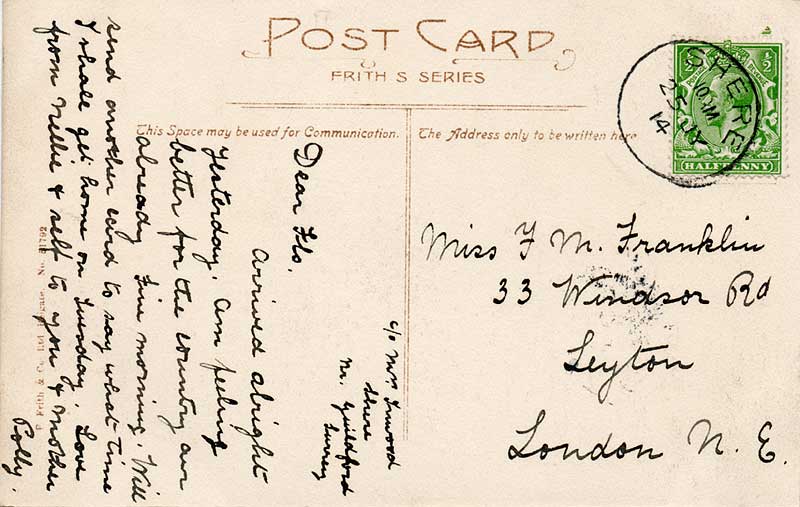
...the rear of the same postcard sent on July 25th 1914 - 'roll over' the card to read.
The postcard above (written by Polly to her sister) mentions that they would send another card later that week with details as to when she and Nellie would arrive back home. The card tells us that they were staying in Shere as it's c/o Mrs. Inwood in Shere (no address however). The card hints that maybe Polly was unwell and went to stay in the country to recoup. Is Nellie the lady she is staying with or maybe her other sister?
Now by complete chance I found the promised postcard that was sent two days later by Polly - That is why collecting postcards can be so exciting...
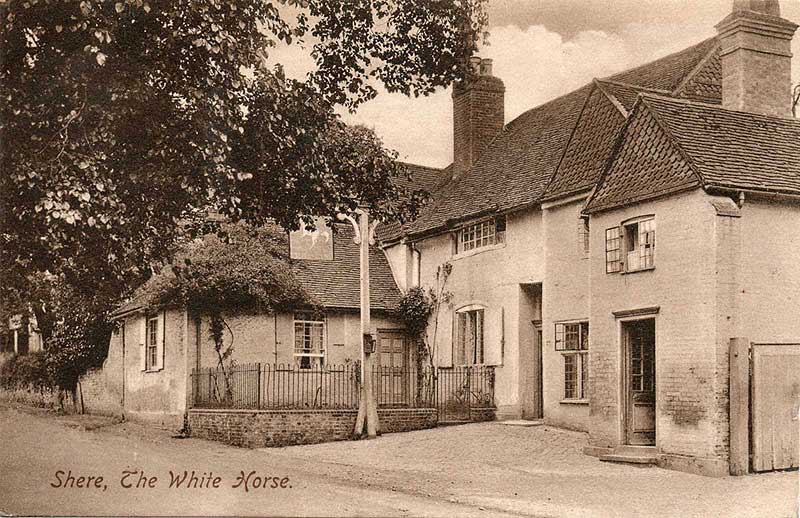
Above: front of the postcard titled 'Shere, The White Horse' - You can just see this in the postcard above as its right in the distance
and below...
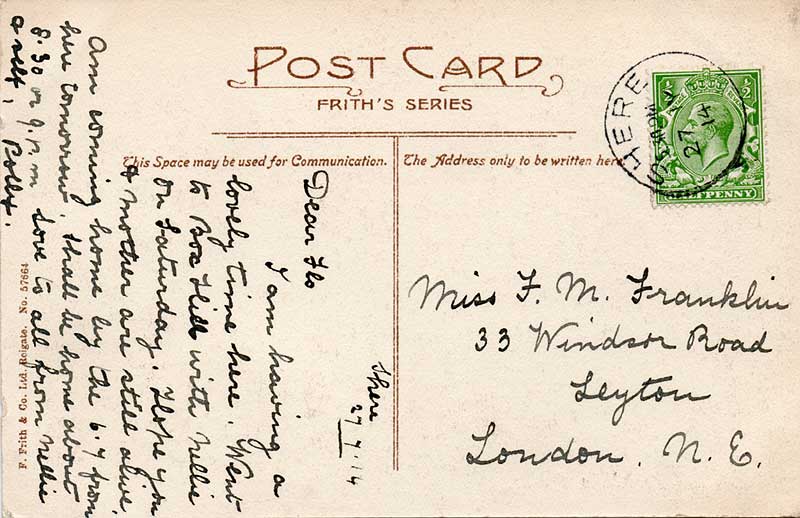
...the rear of the same postcard sent on July 27th 1914 - 'roll over' the card to read.
The infamous "follow-up' postcard above (written by Polly to her sister Flo) mentions that they spent a day in nearby Box Hill and the time that she would be arriving. Nellie must the lady/relation that she was staying with.
BACK to main Postcard page
Brief History of the Postcard
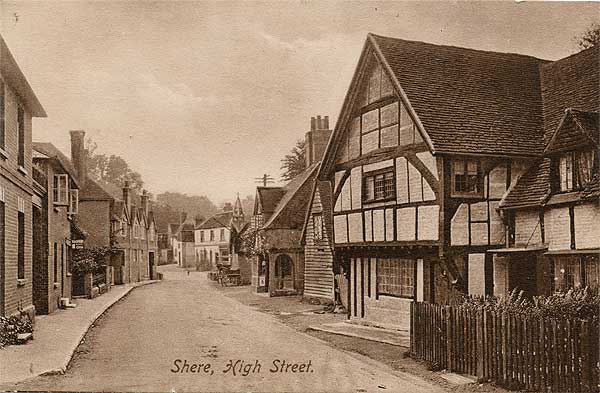 Shere is know as one of the most photographed and prettiest villages in England. Nestled in the foot of the Surrey Downs and this seems to have been the case since photography began.
Shere is know as one of the most photographed and prettiest villages in England. Nestled in the foot of the Surrey Downs and this seems to have been the case since photography began.
Starting in the 1900's, there were a few photographers who were able to spread this word through a new medium, the POSTCARD. Originated in Germany, in the late 1800's.The Royal Mail first allowed the sending of privately-produced illustrated cards (picture postcards) in September 1894 and figures reached 20 million by 1910. A couple of well know compnies were leading the way by bringing pictures of villages and towns around the world. Leading the way were a couple of large photographic companies, Frith and Judges, names that appear stamped on many postcards.
Local photographer, James Edward Percy Lloyd born in Shere and who contributed greatly to the postcard development in the UK.
|
James Edward Percy Lloyd - 1865-1946 |
Percy Lloyd, Albury's postmaster and village photographer, first came across picture postcards by chance in about 1900 during a visit to Germany. By 1903 his photo coverage had penetrated West Sussex, Berkshire, and also Margate where the family holidayed. into the 1920s, but Percy did not resume volume production.
His son Stanley left the RAF in 1921, joining his father a year later in setting up a photographic studio and camera shop in Guildford's upper High Street at number 4. Percy retired to Selwyn, 42 York Road, Guildford but the new venture kept him active until his death on July 6, 1946, aged 81. Stanley continued the business until 1969, trading as Lloyd's Photographic Centre. It moved in 1954 to 144 High Street, later re-numbered 156.
The studio with its one-time post office still stands in Church Lane, Albury. The big first-floor north-facing window lit the studio, and the post office was to the right of the front door.
Its wall clock, inscribed "Lloyd, Albury Post Office" now hangs in the village hall.
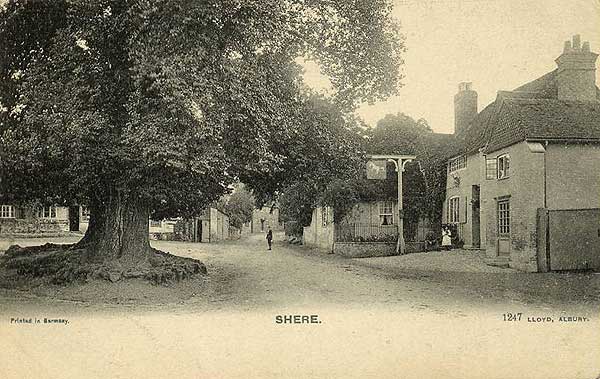 |
1247 Lloyd, Albury postcard |
Historian and antiquarian Dr George C. Williamson of Guildford wrote in 1924 of the postcard's first popular reception when issued to German troops in the Franco-German War of 1870. He concludes: "The only real advantage that the world has ever derived from war was the introduction of the postcard." Percy would have liked that.
Cards marked "Lloyd Albury" are highly sought after today. They reflect the Edwardian tranquillity of our still beautiful part of England.
Extract taken from GET SURREY
READ MORE | PHOTOS
In AUCTION - June 2014 a personal Percy Lloyd album was sold for £250.00:
James Edward Percy Lloyd (British, 1865-1946) "Views in Surrey," an album containing 48 vintage albumin-print landscapes in and around Albury and Shere, late 19th century, several with credits in the negative; mounted two to a page in a folio album bound in half morocco and cloth.
The Square and Lower Street
High House side of the footbridge leading to St. James' Church
BACK to main Postcard page
Shere - hidden gems in time
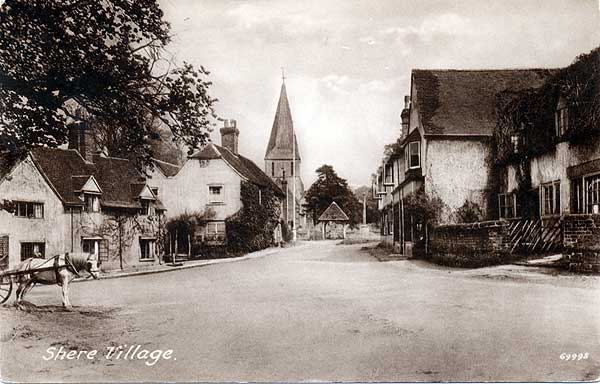 In the centre of this picturesque Surrey village is 'The Square', one of the most photographed parts of Shere.
In the centre of this picturesque Surrey village is 'The Square', one of the most photographed parts of Shere.
St James's Church (built in 1190), situated in 'Church Lane' and overlook 'The Square'.
The church has a Norman tower and its Lychgate was designed by the British architect, Edward Landseer Lutyens in 1901. The church is one of the attractions on the Pilgrim's Way and is famous for the story of the anchoress, Christine Carpenter, who was enclosed in a cell within the North wall of the church for three years.
The following is taken from 'History of St James' Church Shere, "The present church dates from the 12th century and took its original form in about 1190. Architecturally it is regarded as one of the finest examples of the early English style, known as Transitional. The church has withstood the storms and ravages of dark days and regained its strength and beauty in the good times. The Domesday record shows that there was a church here in Saxon days..." This book is available for sale from St James' Church
